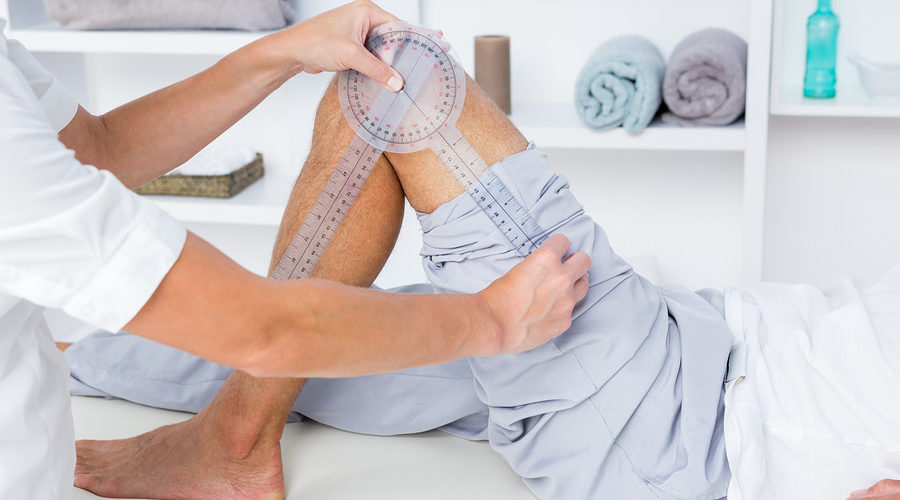YOUR PROGRAM IS ONLY AS GOOD AS YOUR ASSESSMENT
A full body assessment should be the first step in designing an exercise program. It is a necessity if you truly want an individualized program that will address YOUR specific needs structurally, physiologically, and emotionally. Blindly following commercial exercise routines on TV or the internet will not bring you closer to optimal health. These unguided, trendy routines typically attempt to strengthen only two of your body’s systems: muscular and cardiovascular. Even if these routines do exercise these systems, are they doing it in a way that you, specifically, need them to? What about all of the other systems of the body such as: Nervous, Digestive, Endocrine (hormones), Respiratory, Immune, and Reproductive?
My full-body assessment will assess faulty posture and structural discrepancies in all planes of movement, while addressing muscular length/tension ratios from head to toe. Abdominal wall function will be assessed as it relates to strength, stability, and movement. I will also assess your physiological load, and the stress it places on the systems listed above.
The Digestive System:
Is your diet the cause of your knee injury or disc herniation?
We should start here because your nutrition should be in place before you grab a dumbbell, or saddle up on a spin bike. Our cells replace themselves everyday, so you truly ARE WHAT YOU EAT. If you are what you eat, what kind of ligaments, muscles, and connective tissue can you make out of bagels and mac n’ cheese? How can you expect to build muscle out of nutrient bankrupt, dead food? If you want Real Health, you need to eat Real Food.
Aside from the effect the American diet has on the muscular system, is the effect it has on the digestive system and the abdominal wall. The abdominal wall is part of the deep “inner core”, which is a group of muscles that should stabilize the ribcage, spine, and pelvis before and during movement. It is our built-in weight belt or corset. If working properly, the inner core should stabilize the trunk to provide a working foundation for the limbs to work off of. If the inner core is dysfunctional, the trunk is not supported, joints are unstable, and injuries to every part of the body are inevitable.
So what can shut down your inner core “stabilizer” system? Food allergies, parasites, fungal infections (and in women, menstruation) can shut down the inner core. Gluten, dairy, sugar, and processed foods are the most likely culprits. However, anything that causes inflammation in your mid-section (even menstruation) can shut down your abdominal stabilizing system. It is estimated that up to 50% of the population has some sort of allergy/sensitivity/intolerance to gluten and/or dairy. You don’t have to break out in hives, have stomach cramps, or diarrhea to have an intolerance. Inflammation in your gut, which is usually undetected, will induce a “pain” response from your brain to your inner core musculature, causing them weaken, and leaving your entire body susceptible to injury. A thorough assessment will uncover deficiencies in your Digestive system, and show you how to correct them.
The Musculoskeletal system:
Is your workout decreasing your flexibility, and increasing your susceptibility to injury?
It’s not enough to just grab some dumbbells and give yourself a workout. You need to know which muscles are tight and which muscles are loose. You also need to know which joints are locked up, and which joints are unstable. Beyond that, you need to know WHY you have these dysfunctions and how to correct them. To simplify, you need to stretch/lengthen the tight muscles, and strengthen/shorten the long muscles. You need to mobilize locked up joints, and stiffen unstable joints.
For instance, many of us overuse our anterior muscles (upper abdominals, chest, anterior deltoid), and under-use our posterior muscles (upper back, posterior deltoids, and deep cervical flexors of the neck). In life, we constantly pull our posture forward to eat, drive, stare at our computer, or look at our smart phone. At the gym we are obsessed with training the muscles we can see in the mirror (upper abdominals, chest, quads). Although these movements pull us closer and closer to the slouched, forward head, hunched over look that nobody wants, we continue doing thousands of crunches a day in hopes of that elusive six pack. My advice would be to give the crunches up for a bit, focus on STRETCHING the upper abs, chest, and anterior deltoids, mobilize the thoracic spine, and STRENGTHEN the upper back and DCF muscles of the neck. Then, once your posture is corrected and structurally aligned, you may start a balanced program that incorporates the full body. A thorough assessment will uncover deficiencies in your Musculoskeletal system and show you how to correct them.
The Respiratory System:
Is your inability to breathe correctly pulling you into bad posture?
Respiration is our most vital function, and your body will sacrifice everything below your head to ensure that respiration is not impeded. You can survive without your biceps, but you’ll be dead in 5 minutes or less without oxygen. In other words, your body doesn’t care about how well it can squat if it can’t breathe correctly. In order to get air into the system, your head may shift, causing your trunk to twist, which may lead to a rotation in your pelvis. That pelvis rotation could place increased torque on your knee joints, leading to an injury. The bottom line is that your inability to respirate could lead to a number of dysfunctions from your neck down to your feet.
Aerobic exercise will generally improve your cardiovascular system. In addition to training your heart, it will help your oxygen uptake and delivery to and from your muscles. However, what if your aerobics class, weight training program, or life in general is pulling you into the forward head posture detailed above? Every millimeter your head moves forward impairs your body’s ability to respirate. If you have a forward head posture, the more you run, lift, move, or do anything that requires you to breathe, the more your head will try to adjust to get air into your system. Also, your pelvis always wants to be under your head. So, if your head is forward, your pelvis will move forward too.Try taking a deep breath in that position! A thorough assessment will uncover deficiencies in your Respiratory system, and show you how to correct them.
The Nervous System:
Is your workout adding more stress to an over-stressed body?
The Autonomic Nervous System has two branches: Sympathetic and Para-Sympathetic. The Sympathetic Nervous system facilitates our fight or flight response to a stressor, and produces catabolic (tissue destructive) hormones such as Cortisol. The Para-Sympathetic Nervous System facilitates digestion, elimination, and the production of anabolic (tissue building/repairing) hormones such as Testosterone, Growth Hormone, and DHEA. Most of our population is stuck in a Sympathetic (catabolic) state throughout the day which suppresses our Para-Sympathetic System. Your fight or flight response starts in the morning when your alarm clock goes off –which is the modern day equivalent to waking up with a lion chasing you. The stress on your body continues as you turn on the [bad] news while eating a nutrient deficient, carb-loaded breakfast and drink your first cup of coffee, which is necessary because of the lack of quality sleep from the night before. Then, you get to work, only to deal with the pressures of deadlines, inter-office relations, and other stressors. 2:00 rolls around and it’s time for more coffee because, for some reason, you feel tired. Maybe it’s from running from a lion all day. Then around 6:00, you walk into the gym, Red Bull in hand, ready for a kick-ass workout. This is the time of day we should be relaxing.
Does this sound familiar? The problem here is that the last thing this person needs is a kick ass (sympathetic) workout. At this point, an aerobics class, heavy weight training, or any more stress on the body will only intensify the production of cortisol and catabolic hormones, and inhibit the production of testosterone and anabolic hormones. High cortisol and low testosterone = belly fat retention and decreased muscle tone. This is the exact opposite outcome that most people are looking for at the gym. This person needs to be performing more Para-Sympathetic workouts like Thai Chi, Yoga, Chi Gong, or Paul Chek’s “Zone Exercises” before they can “stress” their body at the gym. A thorough assessment will uncover deficiencies in your Nervous system, and will show you how to correct them.
These are just four examples of vital systems of the body that get overlooked by trainers in health clubs all over the country. Your body wants to eat real food. Your body wants to be in proper postural and structural alignment. Your body wants to breathe correctly. And your body wants to stop running from a lion all day. These are the top survival priorities that your body instinctively moves toward every day. Your workout should prioritize and honor, not minimize and destroy these systems. Your workout should not be a form of punishment that brings you closer to death. It should be uplifting, and bring you closer to optimal health. To do that, you first need a thorough assessment, which will help you create a manageable training objective that fits into your lifestyle.


